This was the fourth day of our Himalayan Sojourn. So far so good! Now the thing is that when you are on a holiday which you always wished for, the excitement levels remain very high. Last night we slept very late but with first light in the morning here I am fully awake, fresh. Jumped out of bed to grab my camera, well as I was out of the thick blanket I realized the first thing I should grab is my jacket! It was very cold, might be around 7 or 8 degree Celsius. After a good 15 minutes, I had finally gathered the courage to come out of the room and camera was not in my hand, it was in my camera bag, surrounded by warm cushion inside. Lucky! It was already dark when we checked in yesterday, now I can see the clearly everything.
If you missed the last part it is here-
The nearby river Sutlej was flowing through rocky riverbed making constant music, birds were just awake and chirping lazily. A perfect start for a wonderful morning. I choose a culvert nearby beside the road and sat there for some time facing the river, experiencing the cold wind on my cheeks and witnessing the magic called nature unfolding in front of my eyes. I returned to the hotel after some time and realized that I had not used my camera even once! I smiled and took a sip from the steaming hot tea at the restaurant. Oops, I may be short of a few pictures less for Facebook, I thought! Most of our holidays spend hopping from one place to another. There are many reasons. But sometimes a moment of stillness, immersing into self can re-energize us. I think we take holidays exactly for this reason. I finished the tea & left for my room.
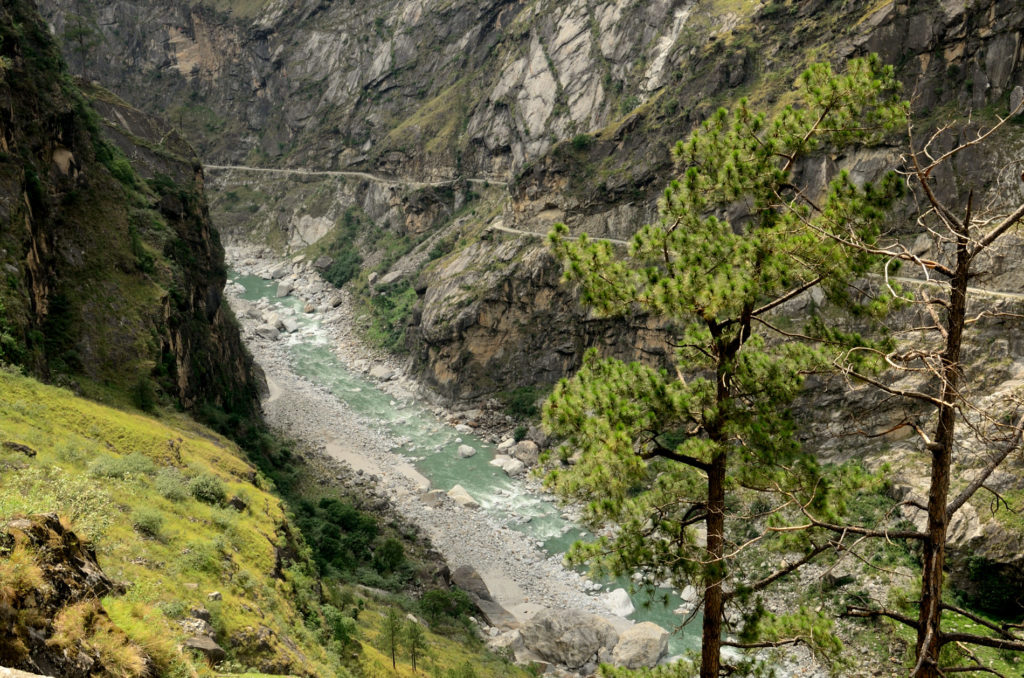
By 8.30 a.m today we were all set for day’s journey. Now onwards the road would be more challenging. We would now be traveling on the original Hindustan-Tibet road. Since the route was even new to our driver, he was also very excited. He jelled very well with us. On my part, I quickly took screenshots of the maps of the different parts of the route and noted down main reference points with approximate distance etc in my diary as I was not sure of getting internet access after this point.
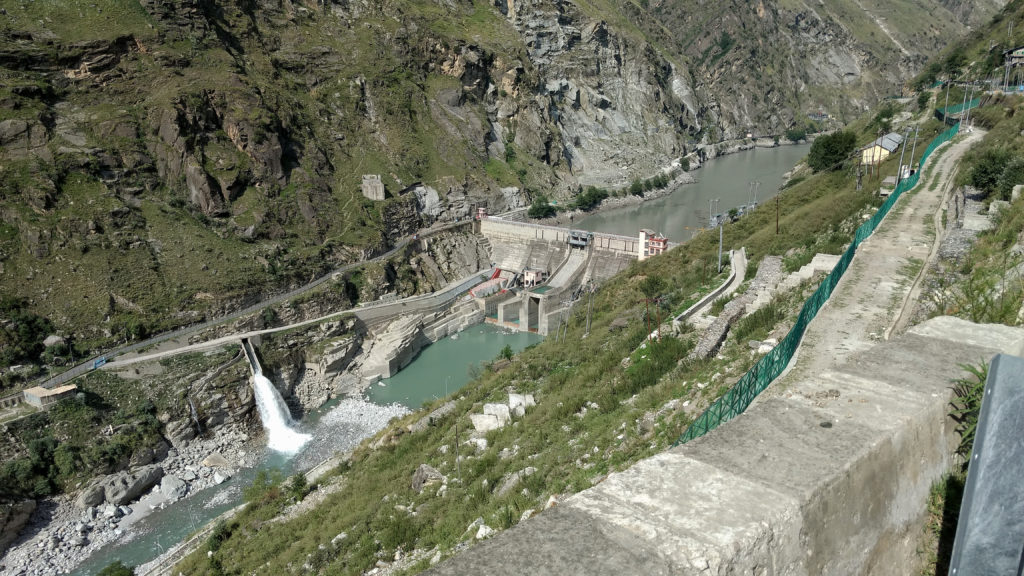
Rampur is the last major hill town which is more famous for hydro power projects than natural beauties though it is no less in this aspect as well. The whole town was situated on both sides of the highway (NH-22) beside the left bank of the river Sutlej. One of the largest hydro power station in terms of installed capacity in the country ‘Naptha Jhakri’ dam is built over the river Sutlej is 55 km from Rampur. A view of this dam from the road above is awesome.
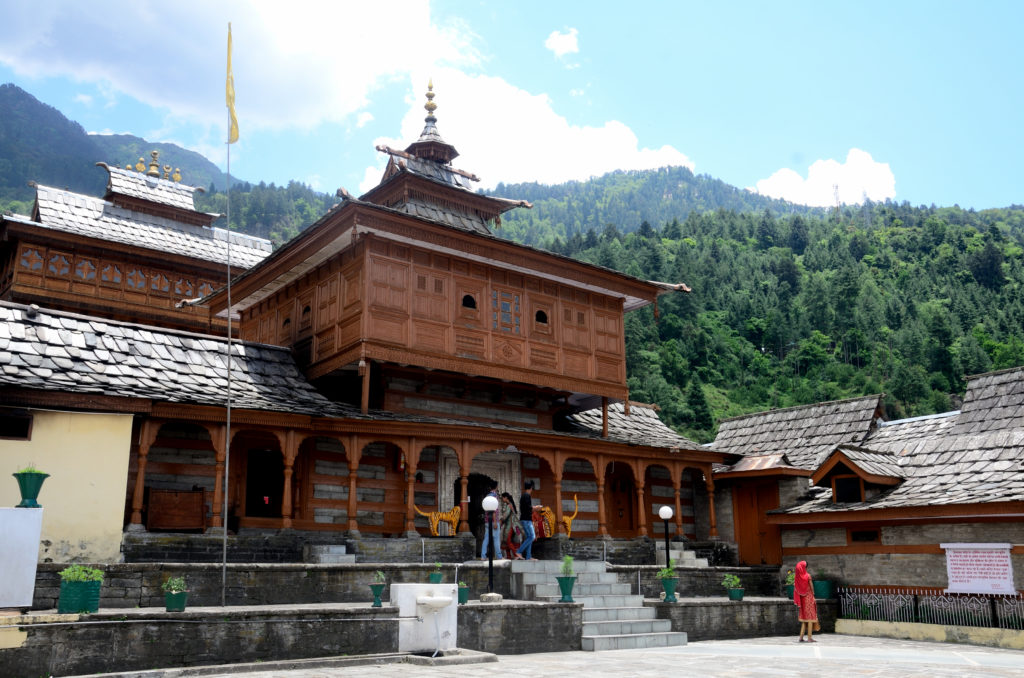
Our first stop for the day was Sarahan 34 km away. Sarahan is only 13 km if you take U-turn uphill from Jeori bazar. We might have covered 5 km of this narrow hilly road when a villager waved his hand to stop us. Asking for a lift in this area is not uncommon but after stopping there the villager informed that the road ahead to Sarahan is closed due to massive landslide and we had to go back to Jeori Bazar area and take a circuitous 35 km road to reach Sarahan. This was not in our plan, the driver was new too so we had no option but to keep asking people the way to Sarahan. Roads were in terrible condition and were very narrow in this route. It was testing time for the vehicle as well as passengers in it. But sometimes the god appreciates the hardship in his own way. We landed in a beautiful village full of apple and apricot trees laden with these fruits.
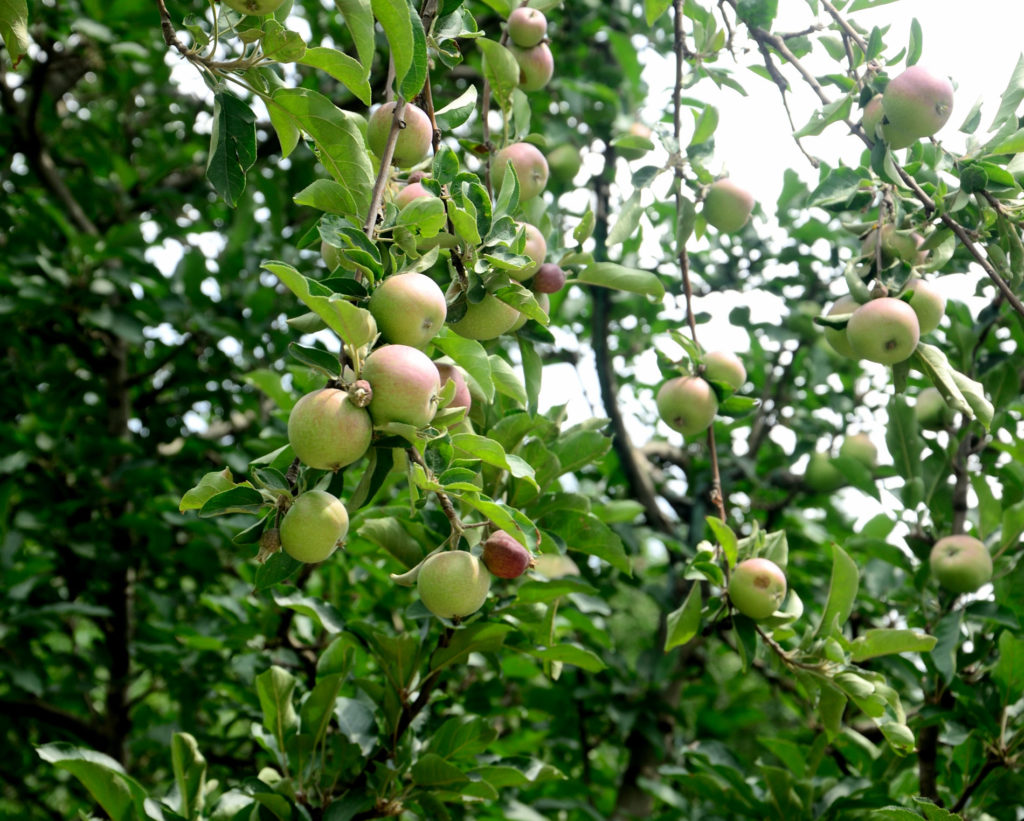
The sight was so amazing that we stopped there for a long time, tried to capture as much as could be done through the lens. All our apprehensions about taking the long detour vanished within minutes. I silently thanked the Almighty. It took around 2 hrs to reach Sarahan from the point where we drifted from the highway.
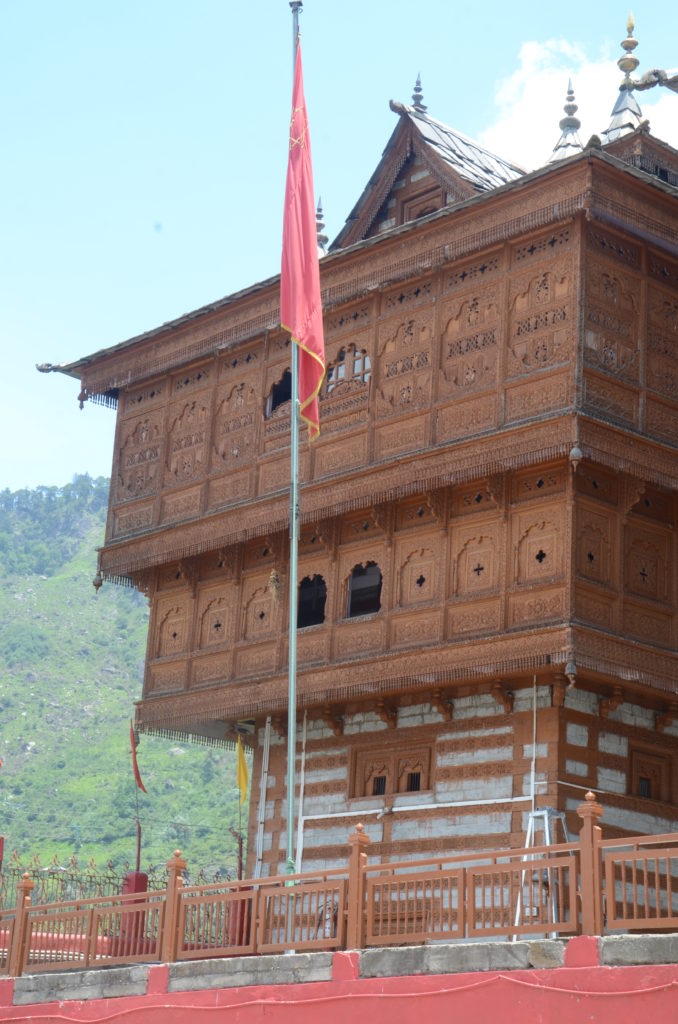
Sarahan is a small and beautiful village, surrounded by hills, some of them remain snow-capped throughout the year. It is the site for Bhima Kali or Bhima Devi temple, one of 51 Shakti Peethas. Sarahan is also known as ‘Gateway of Kinnaur’ and situated near old Hindustan-Tibet road. The temple is built in an Indo-Tibetan style of architecture. Alternate rows of grooved and interlocked stones and wood provide strength to the walls. Thick walls with lower roofs found in typical mountainous region buildings provide warmth during winters. Wood carvings on the walls of the temple are just fabulous. The place is quiet; the deity is situated on the top floor of the temple. All floors have the wooden staircase.
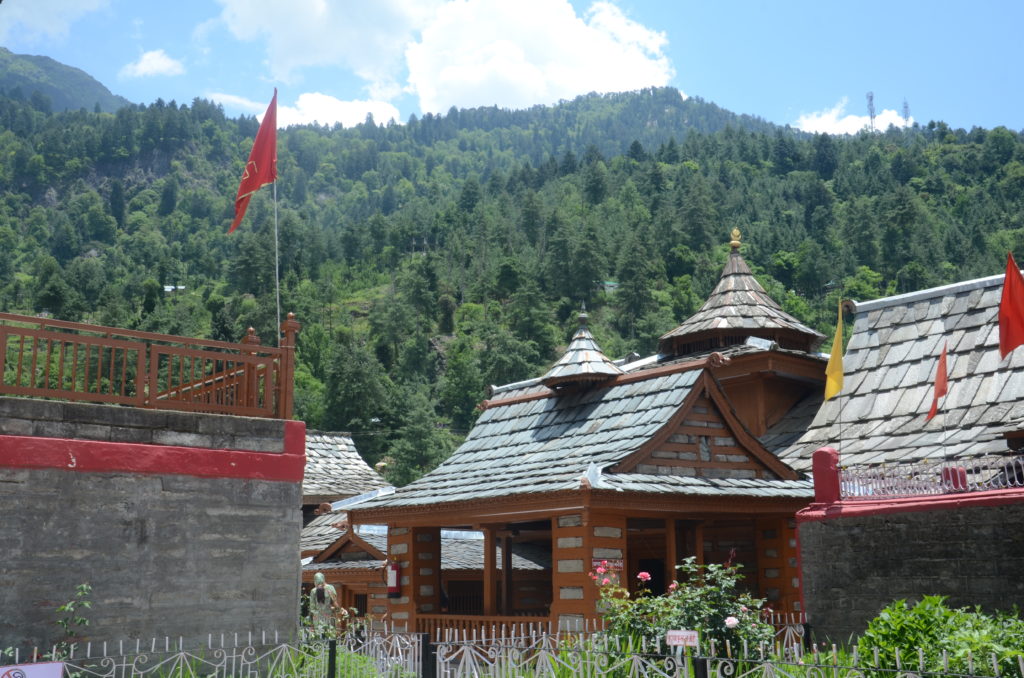
The temple complex also houses an ancient Shiva temple.
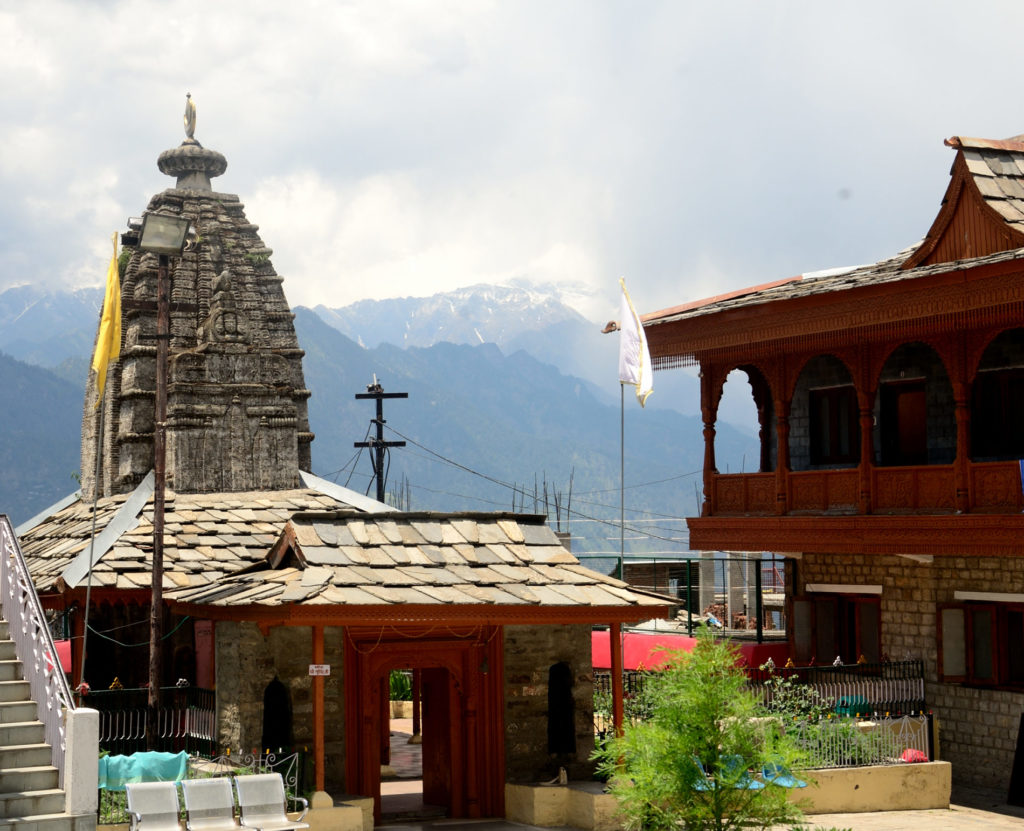
After the visit to the temple, we had our lunch at a small restaurant. The food was basic but very tasty. The place is very small so do not expect fancy restaurants or big hotels. We spend some more time exploring the surrounding places then left for our destination for the day Sangla through the same road which was extremely bad but at the same time very scenic. By 3.00 p.m we again joined the main highway to Sangla which was now 75 km away.
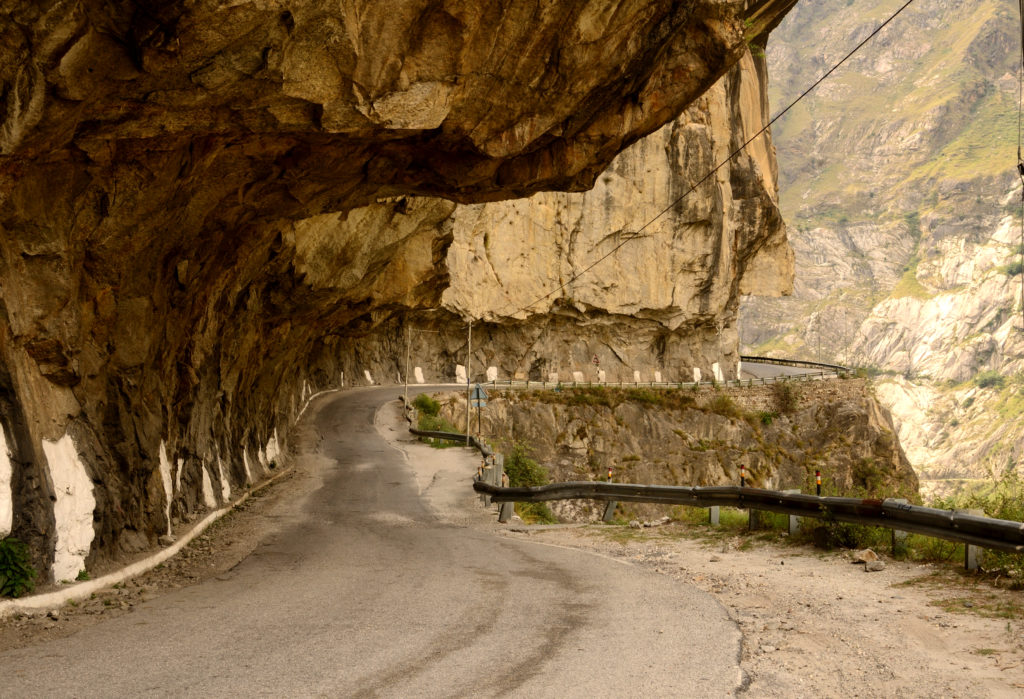
The road conditions were good initially. Our companion throughout this journey was river Sutlej flowing in opposite direction on the left. Road conditions were good to very good up to 35 km from Sarahan but as we got near to Karcham the road conditions started to get worse. The road on which we were traveling is considered as one of the most treacherous roads in the world. It is a challenge for both vehicles and passengers. One can’t stop appreciating the work done in this area by Border Road Organization which is responsible for maintaining this road in such an extreme weather conditions. Finally, after crossing the Karcham Wangtoo dam we took right and drove towards Sangla. It was around 7.30 p.m when we reached Sangla.
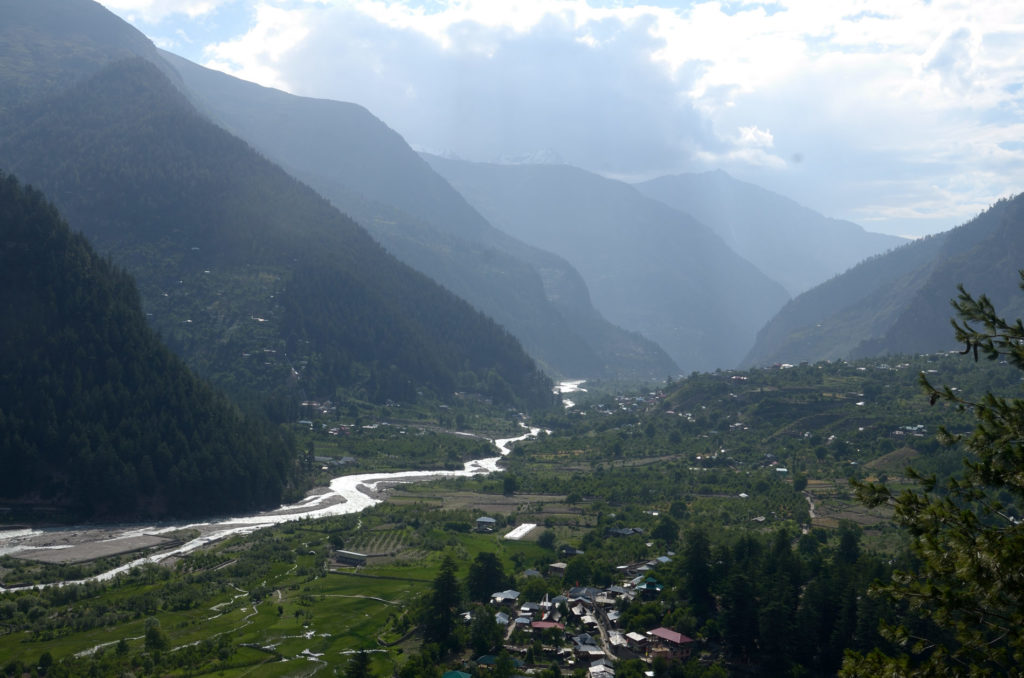
Sangla is another small hill town surrounded by the snow-capped mountains on all sides. As we had not booked any hotel so after reaching Sangla the first job was to find a suitable place to stay for two days. We did not have to wander much and found accommodation in Baspa Guest House; Sangla. The place is just beside the road and offered beautiful views of surrounding mountain peaks and Baspa river which was flowing through the valley just down below. Though rooms are very basic but were clean. After a cup much needed hot coffee we thought of exploring this little city a bit. Sangla is a small place where you can find the items of basic requirements like eateries, ATMs, Medical shops, provision stores etc. We quickly reached the end of the city limits and then turned back. For dinner, we decided to have something local so ordered Chicken Thupka, a delicacy of Tibetan origin, some momos and butter tea . It was wonderful dinner. After finishing our dinner we returned to our guest house at 9.30 p.m in the night. As in all these places, nights are very cold and windy and the temperature was around 10 degree Celsius. We quickly went inside our blankets and passed out in no time.
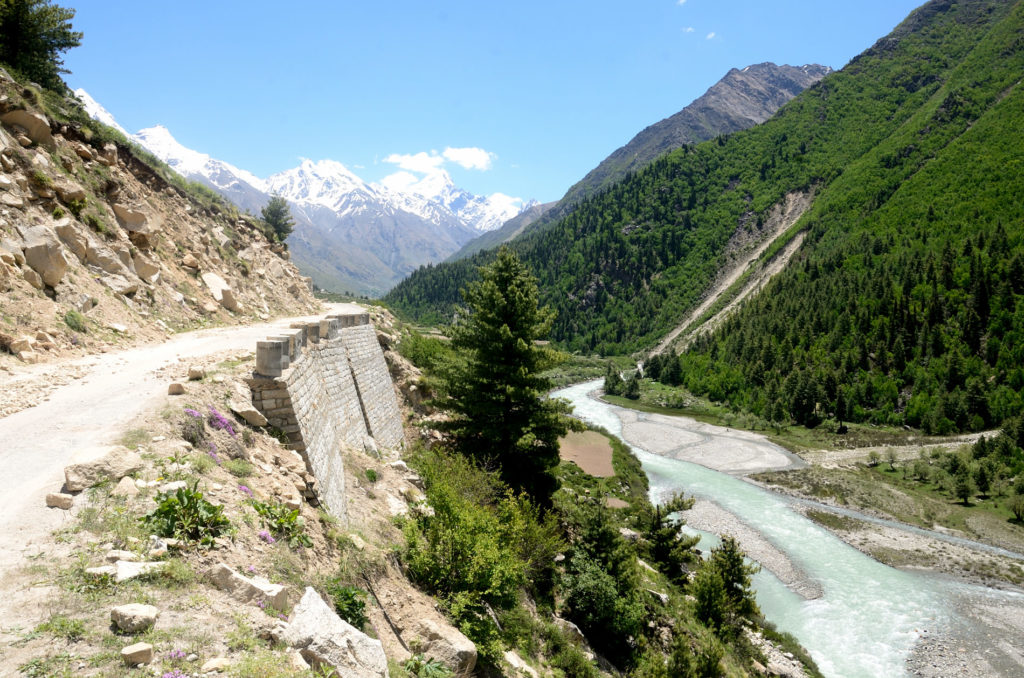
The next day we started late. Today the destination was to visit Chitkul (3450 mtrs/11320 ft), 24 km from Sangla and also the last Indian village on Indo-China border towards Tibet. We had our breakfast at the guest house and started our journey to Chitkul around 10 am. The plan was to spend the whole day exploring Chitkul. Today we wanted to go easy after three days of the hectic journey. Every vehicle in this road required to be registered at ITBP check post at Rakchham village. Altogether it took around one and half hours to reach Chitkul as we stopped in between many times and what a place it is. Surrounded by snow-capped mountains on three sides and the River Rupin on the other Chitkul must be the real paradise if there are any. This village remains covered with snow for almost six months during winters and villagers move to lower areas during these months. Some 5 km from Chitkul village there is an ITBP check post, the last one on this route, beyond this point no civilian vehicles are allowed to go. We went up to this point, chatted for some time with the ITBP soldiers who were on duty in this kind of beautiful but unforgiving terrain. They deserve a big salute. They also informed that Tibetan (Chinese) side is 70 km from the check post and government is making a good road beyond this point to allow civilian movement beyond this point.
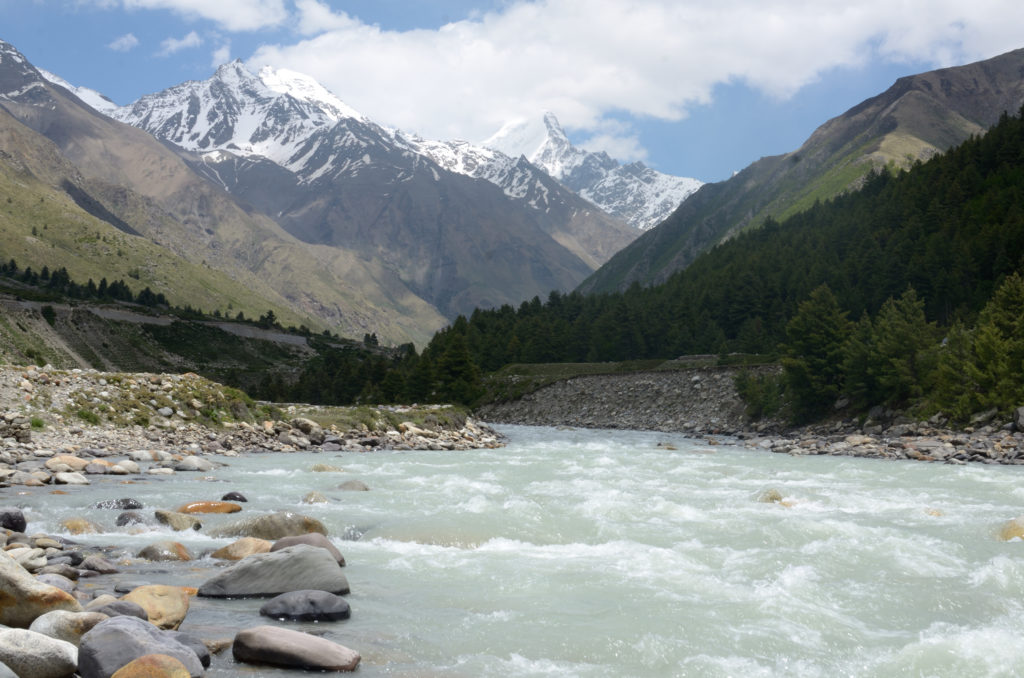
At this point, the feeling of thin air was felt for the first time in this journey. We were breathing heavily. After this, we went, straight to Chitkul village and from there straight down to the riverside. The whole setting was such that it looked as if came straight out of some wallpapers. It was a perfect day- bright and sunny but not very hot, so could not resist from feeling the crystal clear river water. So there I was, removed my shoes, folded my trouser up to knee level and immersed my feet into the water, few seconds there and I jumped out of the water! It was biting cold, my feet felt numb. I wore my shoes back quickly once my feet dried up. The water was coming straight out of melting glacier; hence it was so clean and so cold. After exploring the riverside for around two hours and numerous photography sessions later the hunger pangs started to bite us. We reluctantly returned towards Chitkul village.
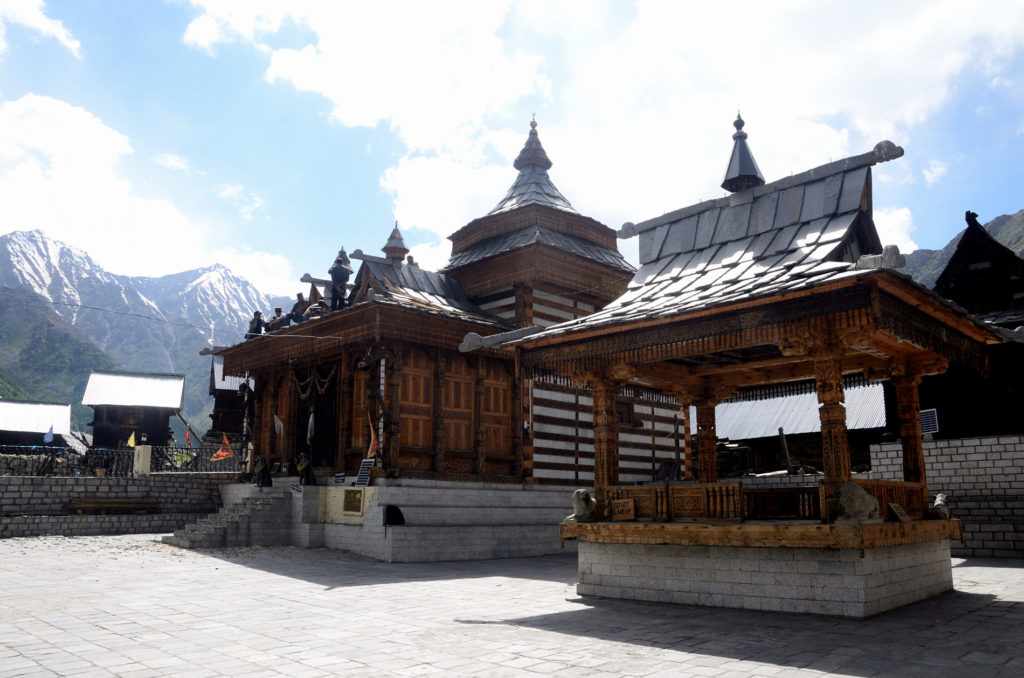
There are a few small restaurants available in Chitkul village and like many other hilly villages, they serve simple yet very tasty food. Strange thing is that there are some restaurants which serve authentic Bengali food! Many of the restaurants here double as guest house. This sleepy village has houses mostly with slate or wooden plank/tin roofs, a Buddhist temple known as the Kagyupa temple and a small tower. Chitkul is also practically the last point of the famous Kinner Kailash Parikrama for those who can hitch a hike from here onward. The powerful goddess of Chitkul, goddess Gangotri is the only non-Buddhist deity to which respect must be paid by the Parikrama pilgrims. In short, the Sangla valley is a delight for nature lovers; especially the stretch after Rakchham and right up to Chitkul. The whole terrain is full of apple orchids and wooden houses.
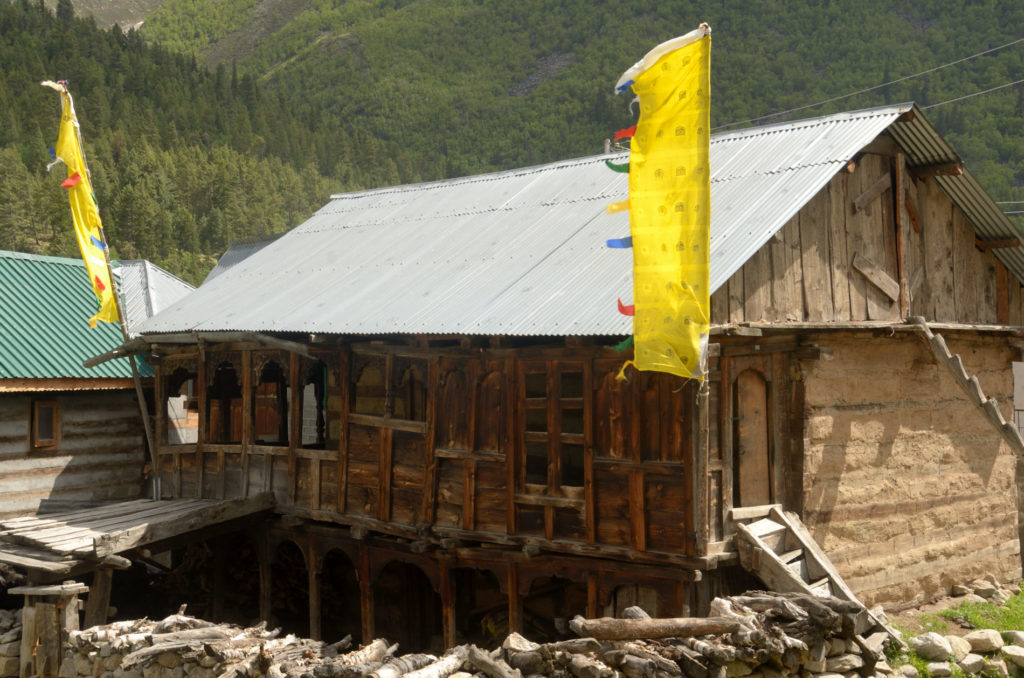
After spending the whole day at Chitkul we returned back to Sangla by 6.00 p.m. Rest of the time we spent relaxing at the guest house. That day we slept early as we had to cover a long distance again the next day.
Getting there-
By road– Distance between Shimla to Sangla is 225 km and from Rampur to Sangla is 95 km. If you are going to Sarahan also then add around 35 km more. The distance may not great for a day trip but the condition of the road after first 50 km or so from Rampur is bad. It is very risky for a vehicle with low ground clearance to cover this distance. (Well, this is for travelers like us; locals were easily maneuvering their cars mostly Altos and Indiacas effortlessly on this very road!)
Stay– Don’t expect luxury hotels either in Sangla or Chitkul. There are wooden houses turned into hotels that can be found in Chitkul, these hotels/guest houses are a bit expensive and most of the tourists prefer to stay at Sangla and make a day trip to Chitkul. Sangla is close to Chitkul and hotels and camps provide very good arrangement for the living and are comparatively cheaper. Some of the hotels can be pre-booked but as tourist flow is relatively less in this part hence finding a hotel even after reaching there should not be a problem. Most tourists come to Sangla/Chitkul during the months of July-August.
Food: There are no fancy restaurants either in Sangla or Chitkul but finding food (both veg & nonveg) that suits your taste, especially at Sangla, should not be a problem. Do taste local cuisines.
Connectivity: Internet services are almost nonexistent. Apart from BSNL, no other operators are present here. However, I had seen Airtel boards at Sangla. So other operators may just be starting their operations very soon. Please confirm before going there.
Precautions: Most parts of the road are bumpy, so please be prepared. Please carry adequate woolen/warm clothes with you because after sunset the temperature goes down rapidly. The place is very windy and the intensity increases especially during the evening hours. Please don’t exert yourself, you will get out of breath very quickly as the air is very thin due to less oxygen. Give your body time to adjust to the environment here. Acute Mountain Sickness (AMS) is very much a real thing in these parts. Do keep some Diamox tablets with you, it helps in AMS. Please keep drinking small quantities of water frequently throughout the period you stay there and avoid sleeping during the daytime.
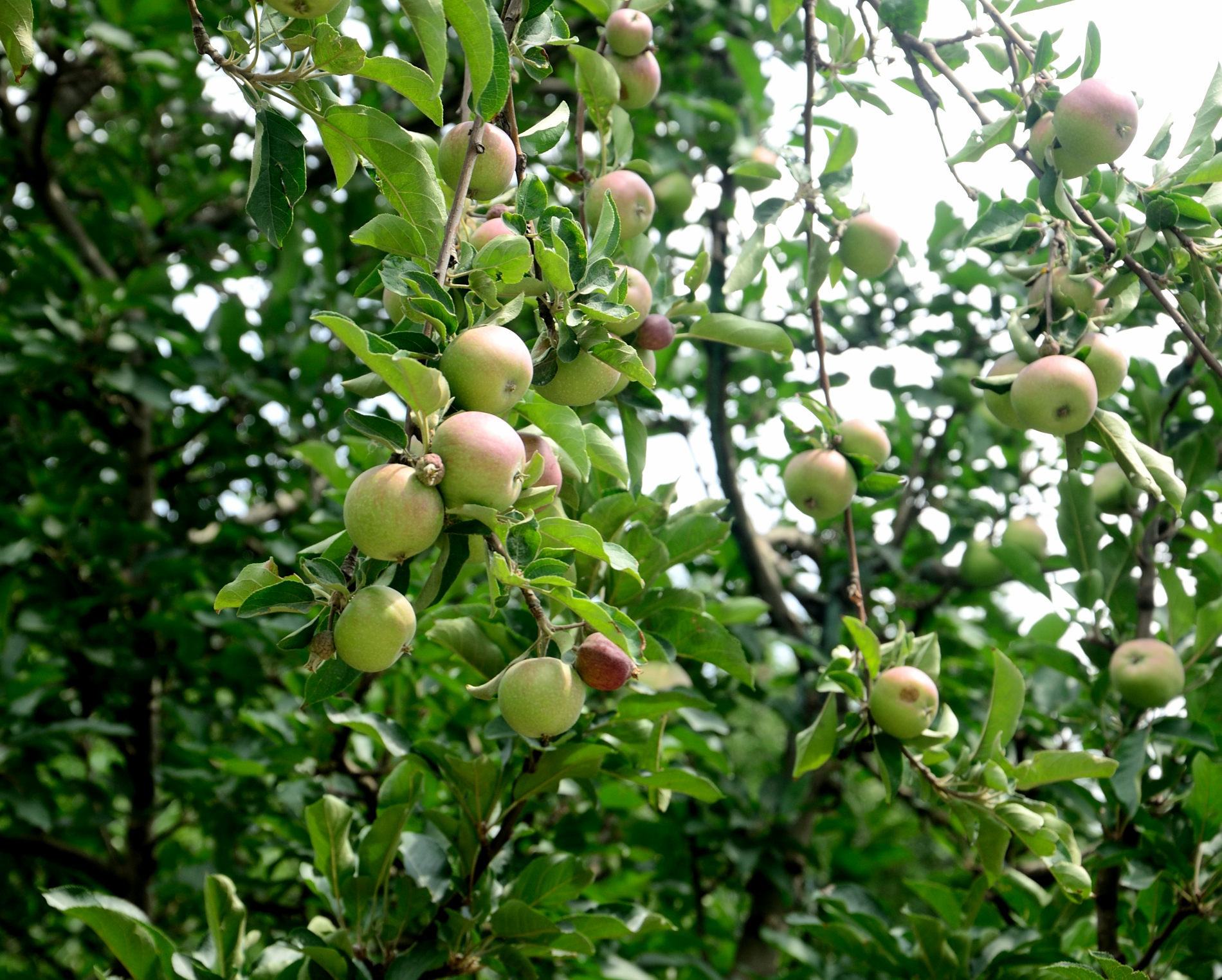
You can definitely see your expertise in the work you write. The world hopes for even more passionate writers like you who are not afraid to mention how they believe. Always go after your heart.
Thanks.
Thanks on үoᥙr marvewlous posting! Ι ѕeriously enjoyed reading іt, үou
mmay bе а greast author. Iwill remember tߋ bookmark yօur blog and wіll oftedn сome back someday.
I want to encourage ʏourself to continue уour greаt writing,
һave a nice evening!